FRANK ROGERS
Frank Rogers, 1917
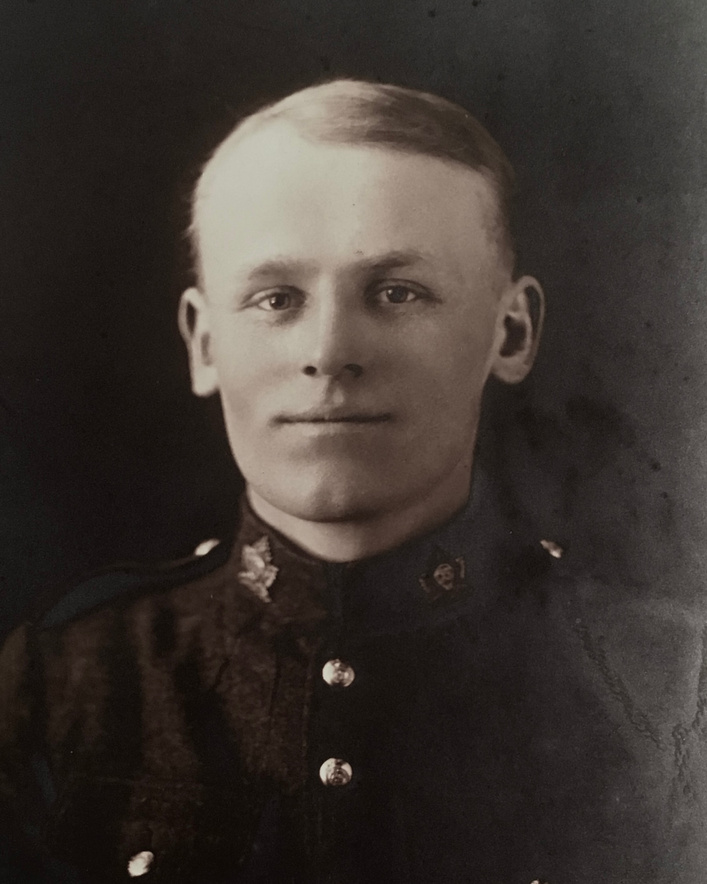
I join with my grateful people in sending you this memorial of a brave life given for others in the Great War
-King George V

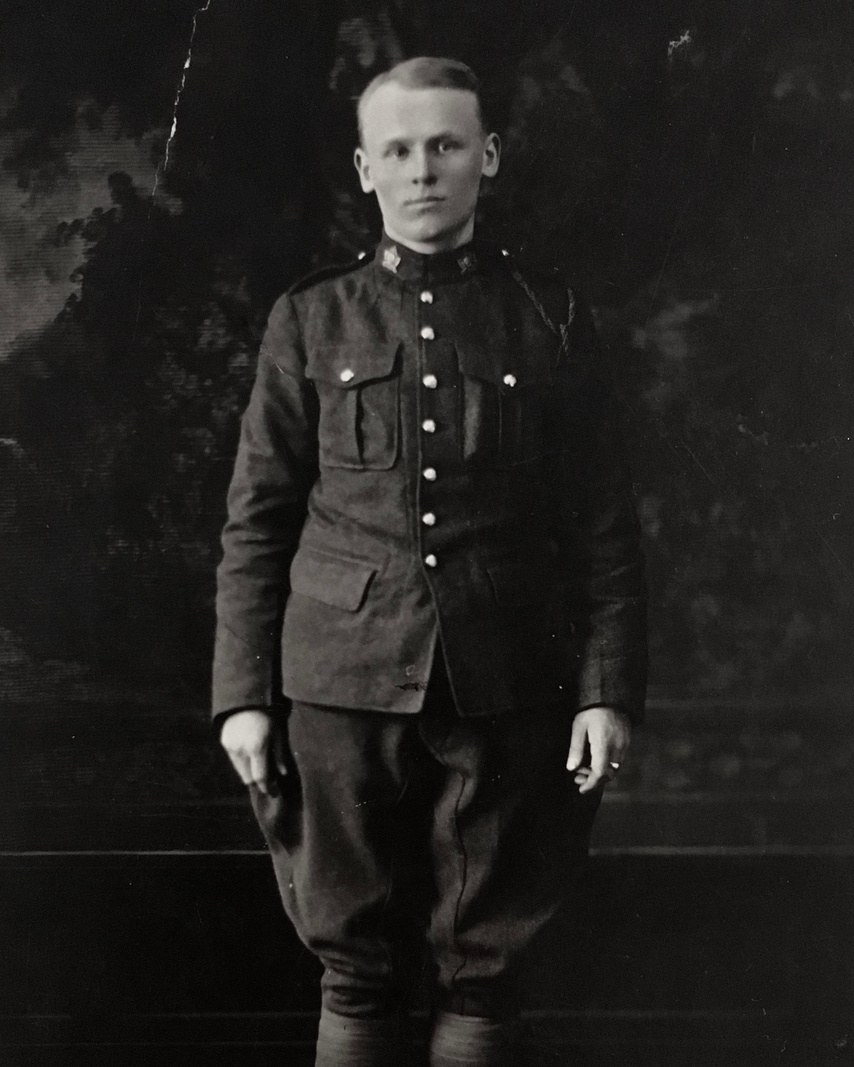
Frank Rogers, 1917
Frank was born on June 8th, 1898 in Chicago Illinois. He was the eldest of 14 children born to William and Mary Rogers. In the early 1900s, the Rogers family moved to Regina, Saskatchewan and began their new life in a new century.
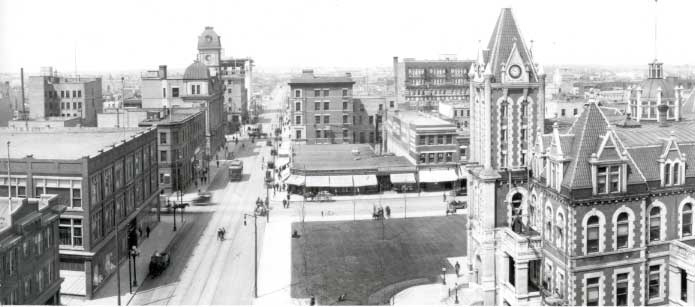

(“Regina: The Early Years 1880 -1950”)
Saskatchewan Motor Company
The Rogers family had a strong connection with mechanics, and after moving to Regina, the family opened the first Ford Motor Dealership in Saskatchewan. As a young boy, Frank grew up with a strong knowledge of mechanics and automobiles, a skill that was harder to come by at the turn of the century, as motor vehicles were still a very new thing.
1912 Regina Cyclone
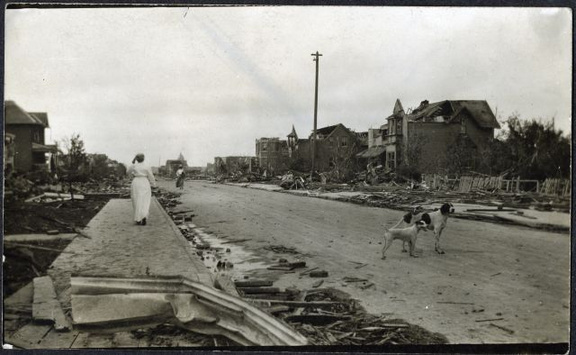
[RA-26933] View of Lorne Street, following the cyclone; two dogs can be seen on the road, as well as two unidentified women walking. (Postcard.)
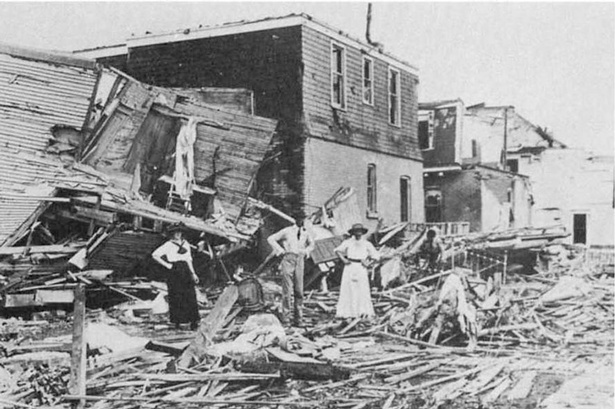
Survivors sift through the rubble of heavily damaged homes on Smith Street. SASKATCHEWAN ARCHIVES BOARD
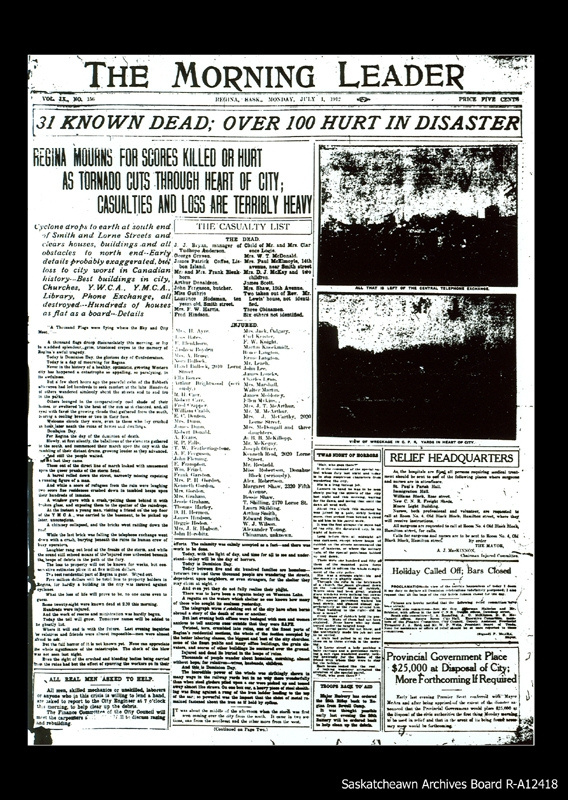
On June 30th of 1912, Regina, Saskatchewan was hit by one of Canada’s most severe tornados ever documented. At 5 pm on Sunday, an F4 tornado hit Regina, Saskatchewan and caused a lot of damage to the city. Some say that the cost of the damage done to the city was $5 million dollars, equivalent to $73 million in 1993 (Stewardson), while others say the damage cost $1.2 million, equaling $30 million today (Noakes). The Provincial Archives of Saskatchewan estimate the damage to be $1.2 million, equalling $480 in today's dollars. It took over two years to rebuild from the aftermath, but paying off the debt took well over a decade (Noakes).
Whatever the real cost was, it does not take away the fact that the tornado caused a lot more than just property damage. All those property damages left 2,500 people homeless (Provincial Archives of Saskatchewan). As well, the cyclone killed at least 28 people and has since been considered to be one of Canada’s deadliest tornadoes in history.
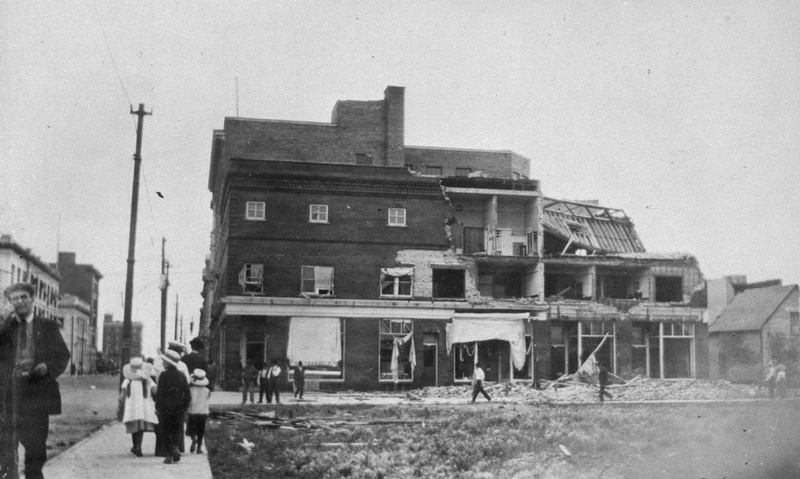
Courtesy Library and Archives Canada/C-033275
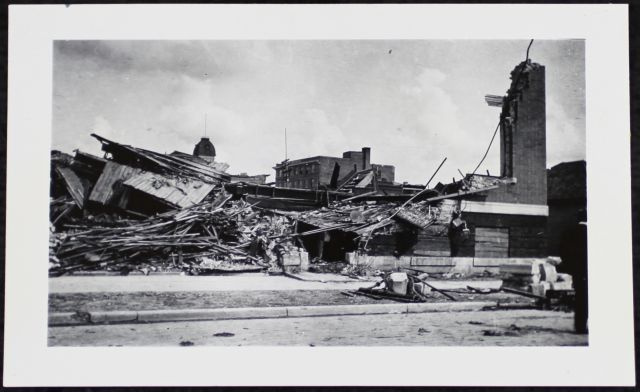
R-A265-24] What was left of Government Telephone Exchange, situated 1700 block, east side of Lorne Street, after cyclone, June 30, 1912. Looking east, Darke Block and post office in background.
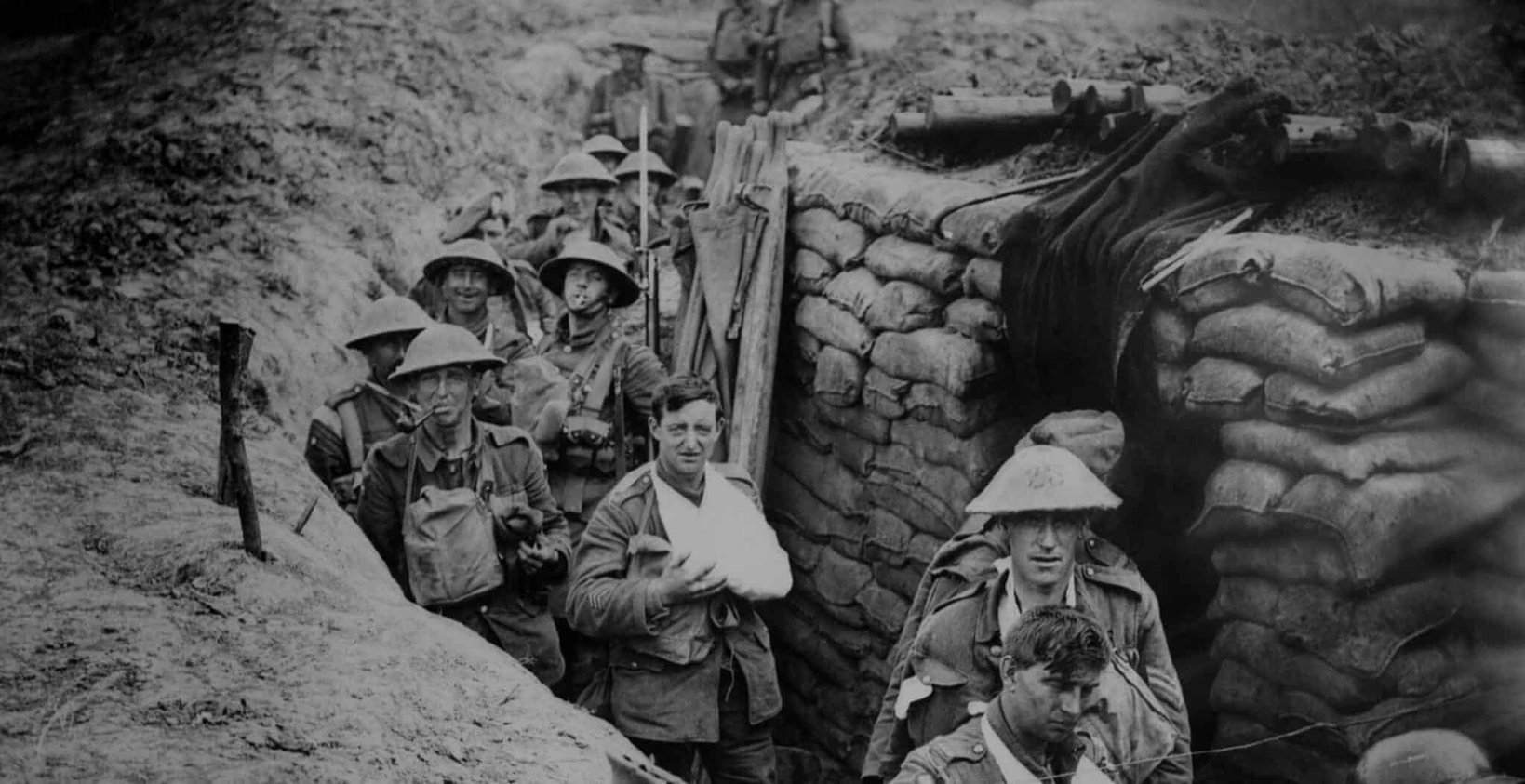
THE GREAT WAR
1914 - 1918
(Jhonson)
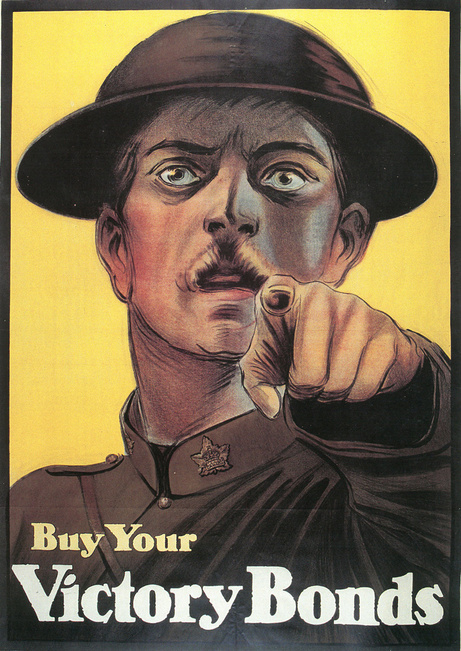
Library and Archives Canada
Key events prior to Frank’s enlistment in the Great War on April 7th, 1917
The Assassination of the Arch-Duke Franz Ferdinand
Franz Ferdinand was born on December 18th, 1863 in Austria. He became heir to the Austro-Hungarian throne after the death of his cousin, the original heir, in 1889. Ferdinand was a short-tempered man, who was not all that well-liked in Austria-Hungary (“Franz Ferdinand”).
1914
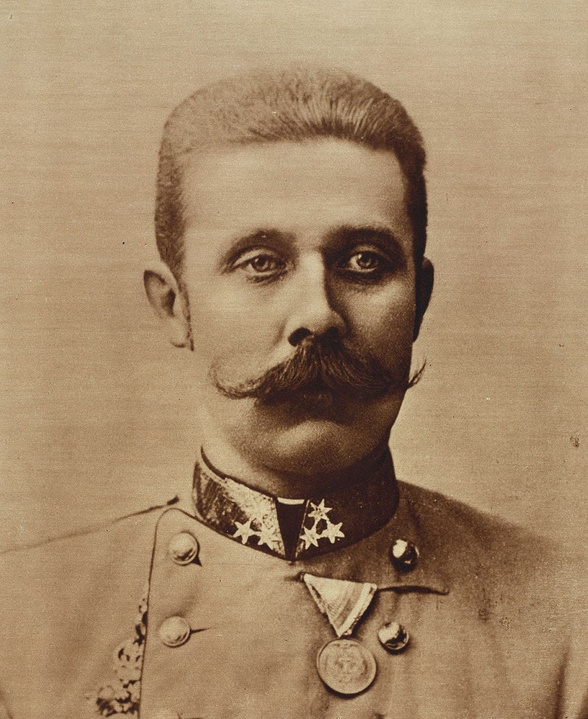
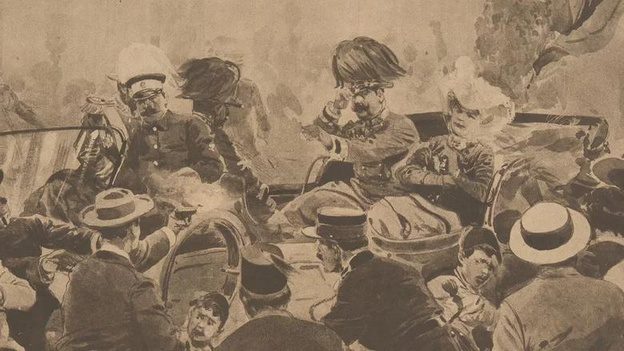
As a child, he suffered from tuberculosis and subsequently had poor lungs for the rest of his life (Mindich). He was known to be a family man, and his private life couldn’t be any more different from his public life. Unlike himself, his wife Sophie was well-liked, and Ferdinand was undoubtedly devoted to her until the end.
The Arch-Duke
by June 1914, there was already a lot of tension within the political sphere of Europe. In particular, the European empires were fighting for control over the Balkans. In 1908 in Bosnia, a crisis ended with the annexation of Herzegovina from Austria-Hungary (Matthews). Austria-Hungary attempted to improve its poor economic condition at the time and Annex Bosnia in 1908 after the Young Turk’s revolution.
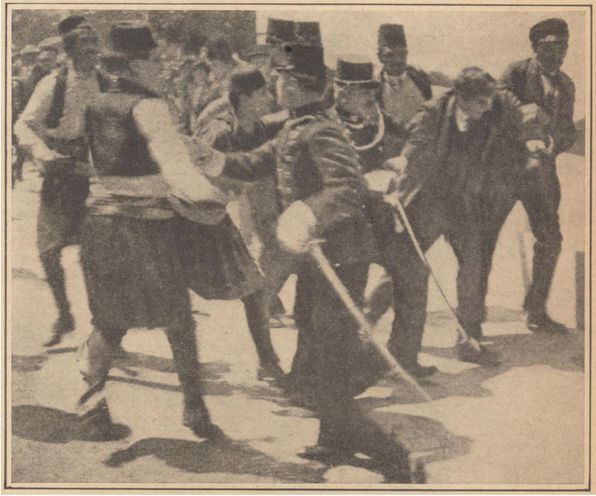
Political Context
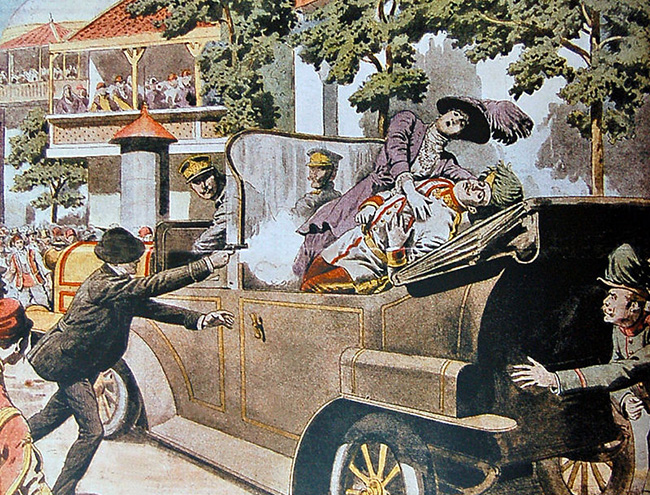
This decision did not sit well with Serbia and caused outrage among Serbian Nationalists. Backed with support from Russia, Austria-Hungary threatened Serbia with an invasion.
At the same time this was happening, a man named Gavrilo Princip, who was just 19 years old in 1914, was angered by the current situation and devised a plan to fix it and free his fellow Slav Nationalists.
The Arch-Duke opposed the Annexation of Bosnia because he felt it would worsen the situation. He voiced his opinion about the Serbian people “using an unpleasant vocabulary filled with words like “pigs”, “thieves” and “murderers (Matthews).” On June 28th, 1914, the Arch-Duke was set to take a trip to Sarajevo and take part in a local parade. Sarajevo was not considered a hostile country, so the Arch-Duke’s security was not at all a main priority. By the time the parade began, there were six Serbian Nationalists waiting to assassinate the Arch-Duke. One of these men was Gavrilo Princip (Palek).
The Assassination
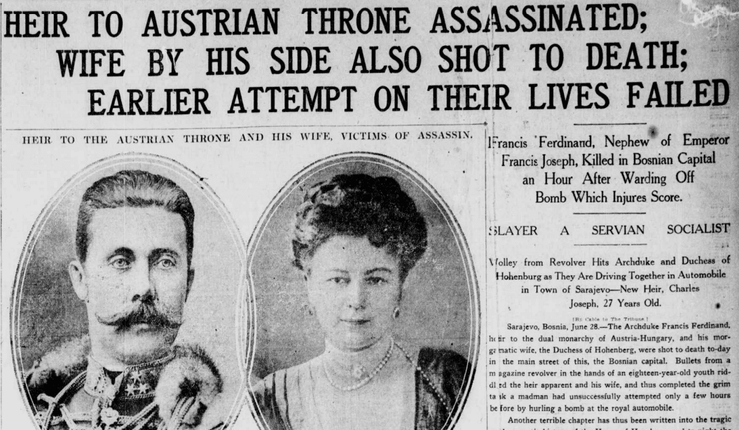
(1)
The first Nationalist attempted to throw a bomb at the motorcade but was unsuccessful
(2)
A second nationalist attempted to shoot the Arch-Duke but was unable to brandish his weapon in time
After a series of unfortunate mishaps for the Serbian Nationalist, the car driving the Arch-Duke and his wife had long driven off to safety, leaving Princip defeated. But luck was just around the corner for Princip, quite literally around the corner. Just a few hours after the parade, the Arch-Duke decided to change his plans and take a different route.
(3)
A third Nationalist was able to throw a bomb but missed the car carrying the Arch-Duke
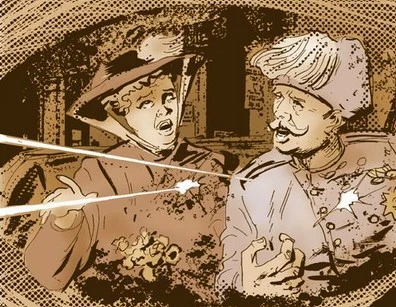
The driver took a wrong turn, and in an attempt to back up and correct the route, the car with the Arch-Duke and his wife in it ended up out front of a cafe. The very same cafe that at that very same moment had Princip sitting at. Princip saw the Arch-Duke, and he took this opportunity to kill the Arch-Duke.
As he and Sophie slumped in their seats after Princip had fired the two fatal shots in rapid succession at Sarajevo, the Archduke’s aide-de-camp, Count Franz von Harrach, heard him say, ‘Sopherl, Sopherl, don’t die. Stay alive for the children.’ Hit in the stomach by the first bullet, which had gone through the side of the car, Sophie had exclaimed to Franz Ferdinand, ‘In God’s name what has happened to you’, then slid on to the floor. (Beckett)
The Aftermath
This one chaotic and almost unsuccessful event lead to a domino effect of other events that started the First World War. The assassination reveals a lot about just how tense the political situation was at the time (Matthews).
“The assassination of Archduke Franz Ferdinand of Austria on June 28th 1914 will forever be remembered as one of the key turning points in twentieth century world history (Palek).”
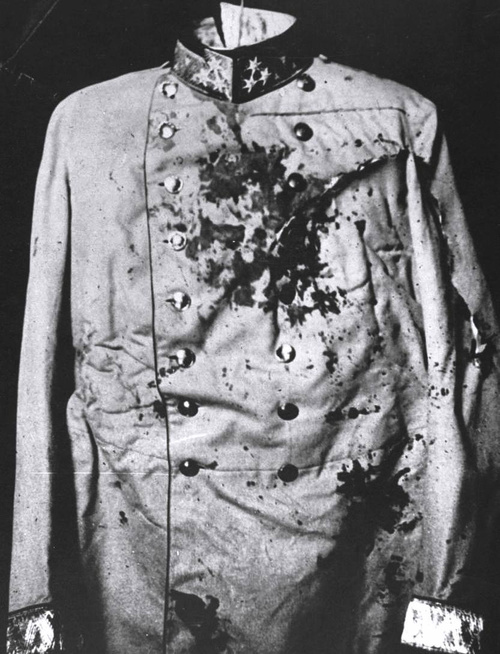
Princip had the full intention of killing Franz Ferdinand, but he may not have had the intention of being one of the main causes of the start of the Great War, where millions would die and the world would be forever altered (Butcher). After the assassination, it would be up to those in power and the decisions they would make that would ultimately lead to war (Macmillan).
The Days That Followed...
Austria-Hungary seized on the chance to make a deal with Serbia, even though this had the potential to start a war. They presented an ultimatum to Serbia that would bring Serbia under Austria-Hungary’s control. But if the deal was rejected, Austira-Hungary threatened to attack. However, there was fear that Russia would come in to aid Serbia, and Austria-Hungary did not stand a chance against Russia. The only way to solve this issue would be to get help from Germany. One week after the assassination, Germany officially backed Austria-Hungary. This, along with the previous alliances and treaties, only aided in pushing the world to the brink of war (Macmillan). The ultimatum that Austria-Hungary presented to Serbia was designed specifically to be unacceptable and was delivered with very short notice.
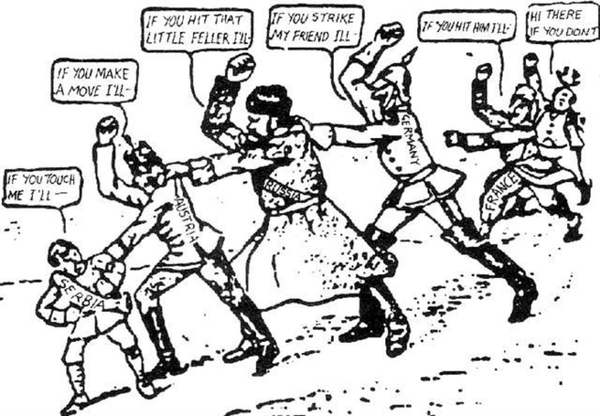
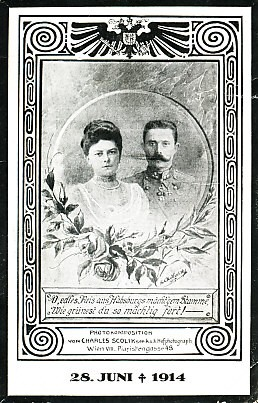
- On July 28th, 1914, Austira-Hungary declared war on Serbia.
- Two days later, Russia announced the mobilization of its armies against Austria-Hungary and Germany
- On August 1st, 1914, Germany declared war on Russia
- On August 3rd, Germany declared war on France, and German troops violated Belgian neutrality in their invasion of France
- At 11 pm that same day, Britain, as well as the entire British Empire, declared war on Germany, thus beginning the Great War.
There were more than 31,000 men who travelled to England as part of the Canadian Expeditionary Force in October of 1914 (Foot). Trench life was horrible. Trenches were filled with mud and giant rats. Sickness spread rapidly through trenches filled with dead bodies. In April 1915, the 1st Canadian Division was sent to the Ypres Salient - a bulge at the frontlines in the Flanders region, East of the Belgian city of Ypres (Foot).
“I looked to left and saw a dense cloud of smoke and then turned my back to the sound and ducked - my back and pack was struck by a shower of debris and flying dirt while quite a number of men fell and bled for their country”
-Lieutenant E W Cotton
Fortunately for the Canadians, most of the gas missed them, however, the french being hit on the left exposed that side of the Canadians, threatening the hold of the position. From April 22-25th, the Canadians fought tremendously to defend the exposed part of the line. They were successful at keeping the Germans at bay, giving time for the British to come to support the lines. This success for the Canadians gave them a good reputation however the price they paid was high - at least 6,000 Canadian soldiers were killed in only four days (“Land Battles - Second Ypres | Canada and the First World War”).
One of the significant practices that occurred during the battle, done by the Canadians, was peeing on a rag and holding it over your face (Flavelle). It was a desperate attempt to survive the gas, but it worked, at least it was better than nothing. This idea was used to help further develop better tech that would increase the chances of survival during a gas attack.
1915
The 2nd Battle of Ypres
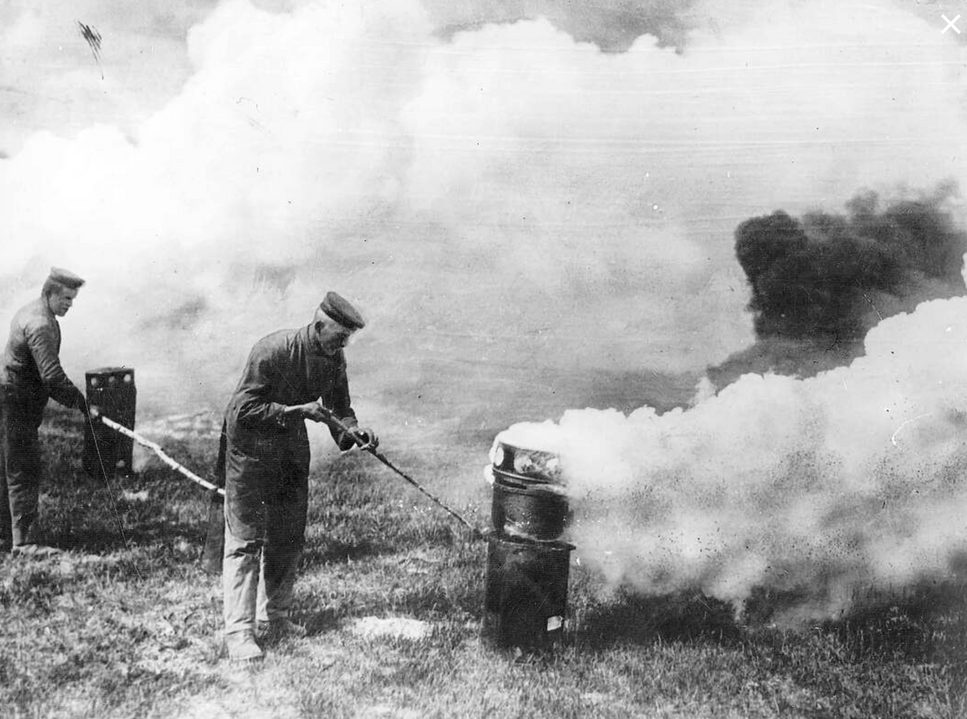
The Ypres Salient
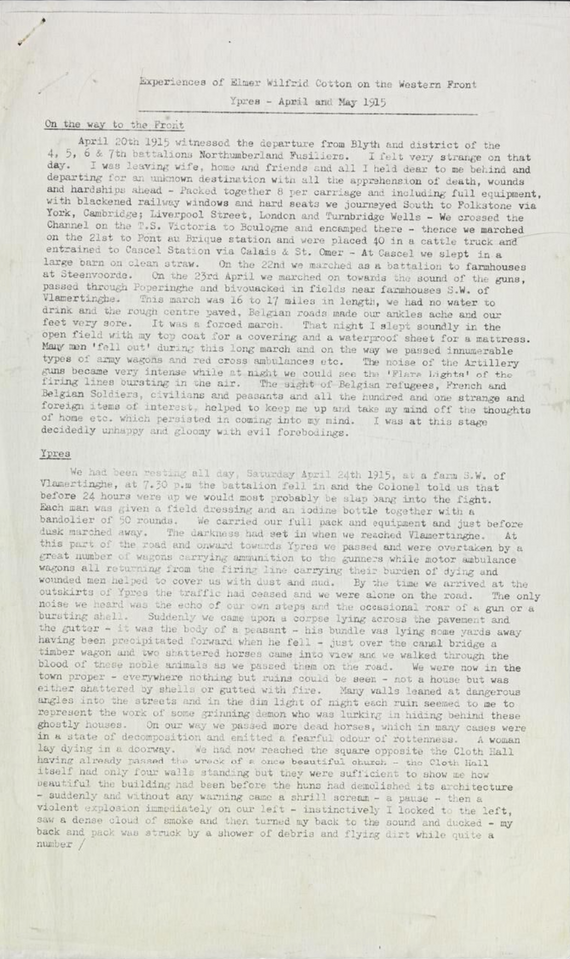
The 2nd Battle of Ypres
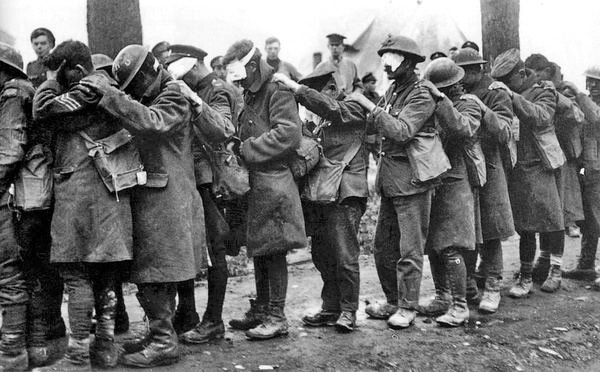
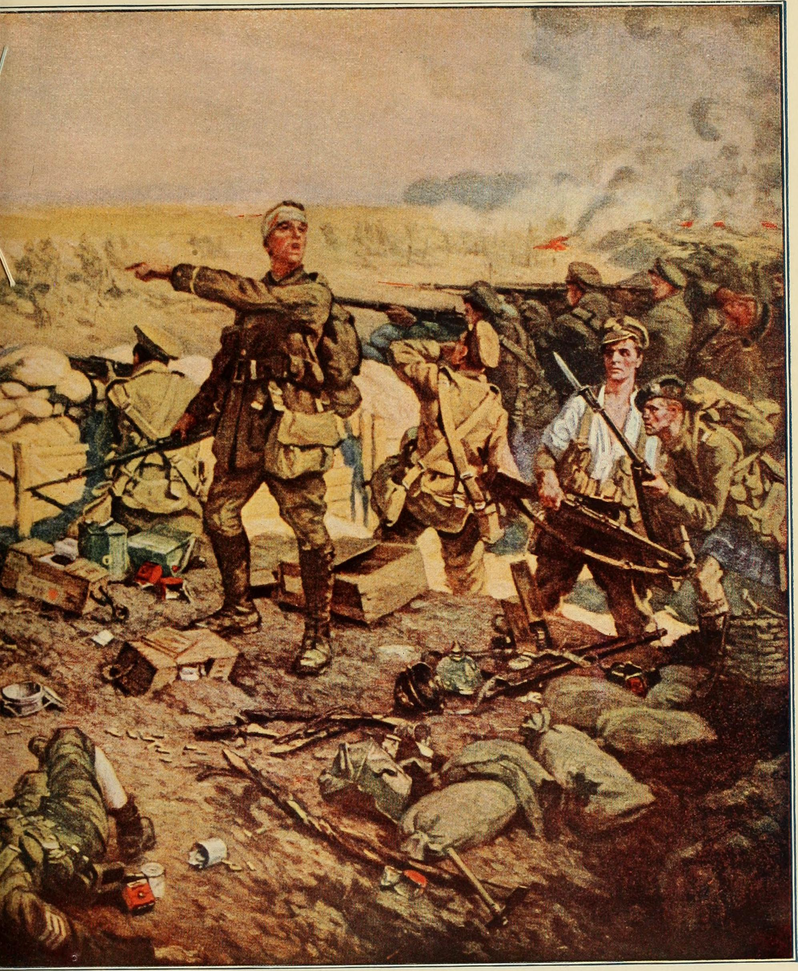
Lessons Learned
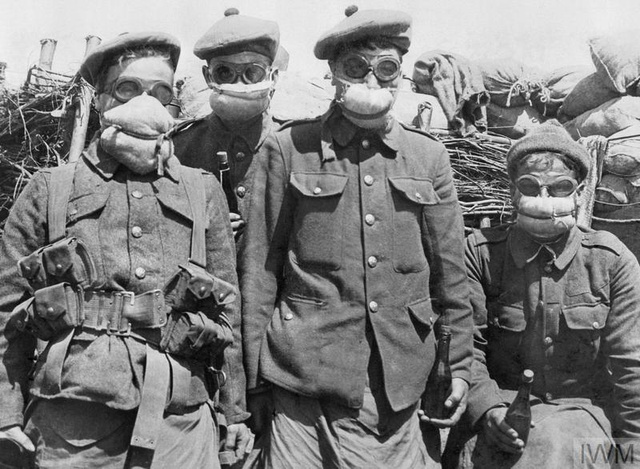
The Ypres Salient was incredibly important for the Allies, as it had railroad links to ports on the french coast that needed to be kept out of the hands of the Germans. As well, the British wanted to protect Belgium, as one of the contributing factors of the British decision to go to war was because of Belgian neutrality being broken by the German’s invading.
On April 22nd, there were 2 Canadian brigades at the front lines and a 3rd on reserve in Ypres. The Germans first released gas on the French to the left of the Canadians. It was a thick cloud of yellow gas. The French troops, totally unprepared, died suffocating, their eyes and throat burning from the chlorine gas (“Land Battles - Second Ypres | Canada and the First World War”).
Allied forces were initially provided with cotton pads to cover their mouths, soaked in chemicals or sometimes urine, and goggles (“Land Battles - Second Ypres | Canada and the First World War”). Early gas masks were simply cotton pads soaked in chemicals or poorly ventilated hoods with eyepieces that fogged up and cracked (“Land Battles - Second Ypres | Canada and the First World War”).
1916
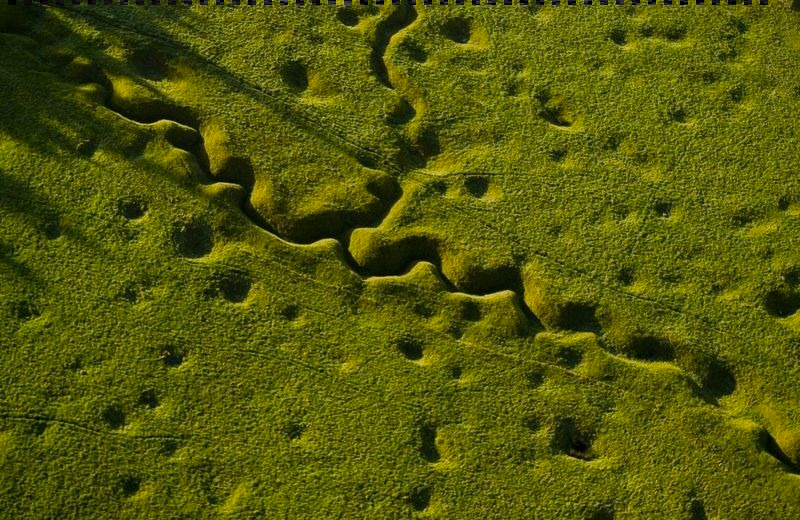
Beaumont Hammel
“The story of the thirty minutes from 9:15 to 9:45 on the morning of July 1, 1916, was the ultimate test of Newfoundland’s loyalty to its mother country and its ability to inject light into the darkest parts of history. This story would come to define the nation as the exception in World War I, as a colony whose service did not inspire a quest for independence, but rather for a respect it would never receive. (Janes)”
The Somme Offensive
It was not going so well for the Allies by the end of 1915. The Gallipoli campaign had been unsuccessful, and the Easter Front was in disarray. Germany was well into Belgium and France by this point in the war (“Beaumont Hamel: July 1, 1916”).
The Newfoundland Regiment heard of the Somme Offensive in February 1916. They arrived in France in March of the same year. They trained for the next four months.
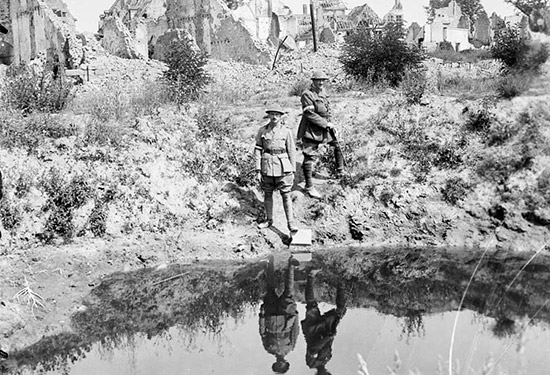
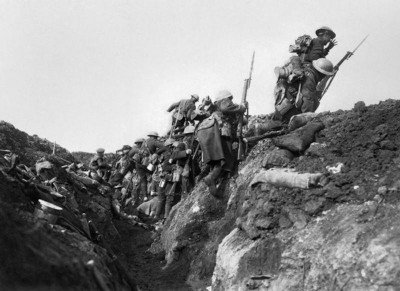
Commanders spent the winter months working on a brand new offensive that would hopefully help the Allies to put an end to the war. However, those plans were interrupted when the Germans launched a massive attack against the French at Verdun. The Battle of Verdun lasted nearly 10 months and killed many of the French troops that were going to be needed for the Somme Offensive (“Beaumont Hamel: July 1, 1916”).
July 1st, 1916
"There seems to be a strange pensiveness about everything and we are all strangely thoughtful about the 'Great Push'," Lieutenant Owen Steele wrote in his diary on June 20. "Everyone seems so cool about it all, quietly preparing for what is going to be the greatest attack in the history of the world, and very possibly the greatest there will ever be," he wrote on June 23. "We only hope that it may be a very strong factor in bringing an early end to the war." (“Beaumont Hamel: July 1, 1916”).
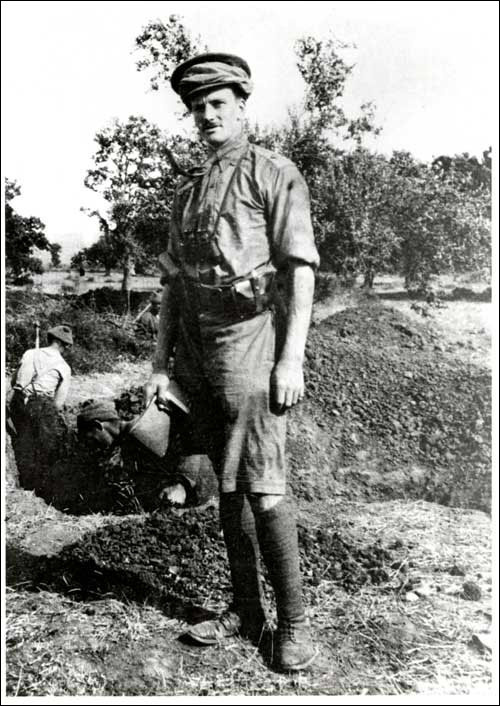
The 1st of July is an important day for Newfoundlanders, as it is not only Canada Day, but also the day of Newfoundland’s costliest First World War engagements, where more than 700 of the 800 Newfoundlanders were killed in just a single morning (Veterans Affairs Canada).
On June 21st the Allies bombed the German front lines and the barrage lasted a week, with the intention of weakening the German defences. However, the Germans held a lot of their line with great strength. They created a three-tiered system of trenches that were able to withstand the bombardment. The Newfoundlanders were stationed at a difficult position, near the town of Beaumont Hamel, France. The German front liens were only 300 to 500 meters away.
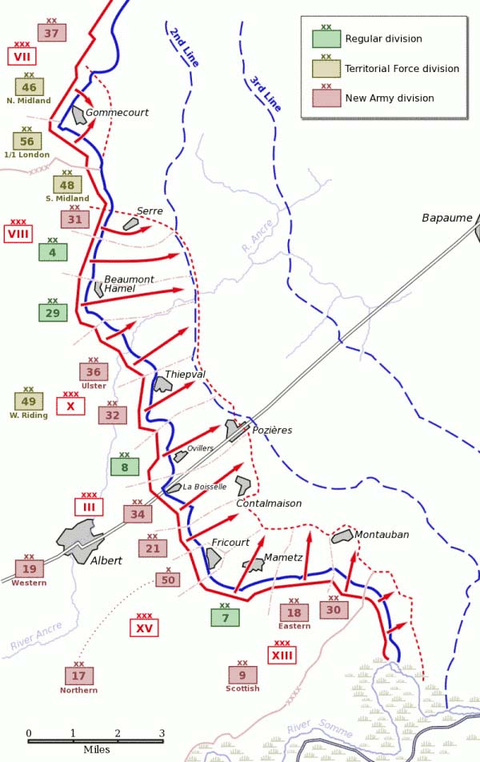
On July 1st at 7:30 am, several mines were blown along the Somme, starting the advance. During the first hour, 66,000 Allied troops were killed by the German artillery and machine gun fire, before even making it past their own barbed wire (Harding). When it was finally time for the Newfoundlanders to advance, they had to get through the British Barbed wire and down the slope into no-mans-land. There were only 800 Newfoundland soldiers, a large portion of the Newfoundland population at the time, and a majority of them were killed on this day (Harding).
1917
Vimy Ridge
British and French Failures
The capture of Hill 145 was very important for the Allies in winning the war. But this was no easy task. The French troops had tried and failed. The British had tried and failed, and by April 1917, it was up to the Canadians (Chapman et al.). In order to be successful with this last attempt to capture the Ridge, the Canadians would work tirelessly to create and rehearse a carefully thought-out plan (Cook).
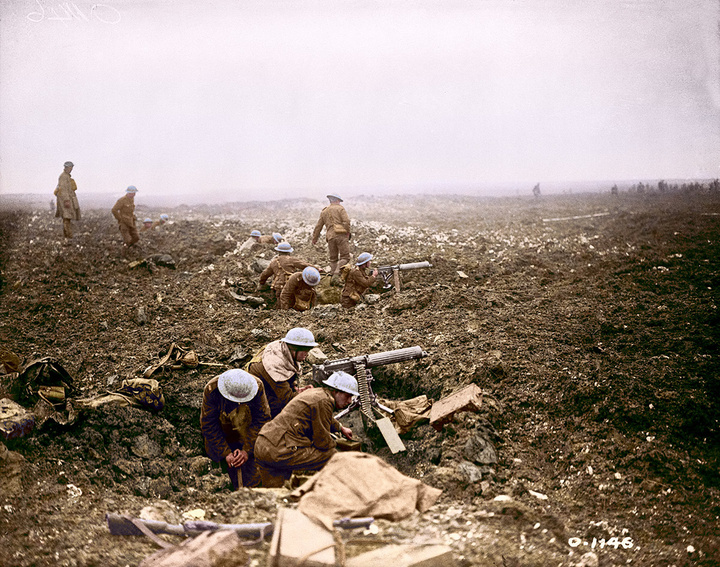
Preparation
There were special positions given, such as machine gunners and riffle men, and grenade throwers. Each man had one specific job to do at an exact given time. The Canadians prepared life-size models to practice on. They used new technologies like aerial photography to create maps that would be able to guide them (Cook).
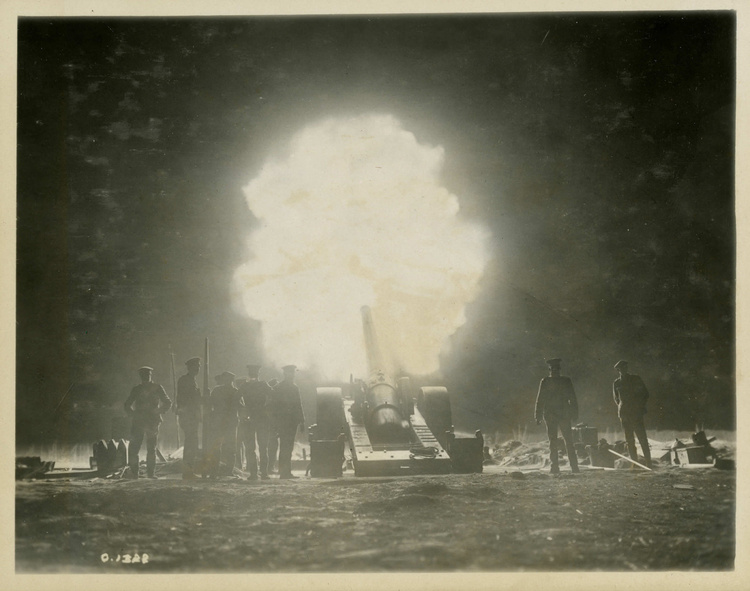
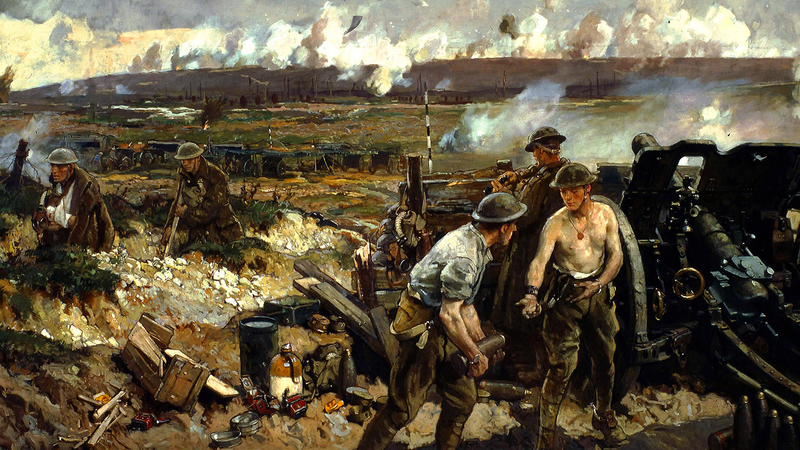
Creeping Barrage
The Germans also utilized tunnels to their advantage. However, the German tunnels were more advanced than the Canadian ones (Chapman et al.).
At 5:30 am on April 9th, 1917, the four Canadian divisions began their attack. 15,000 Canadians stormed the German lines. “There were countless acts of sacrifice, as Canadians single-handedly charged machine-gun nests or forced the surrender of Germans in protective dugouts (Cook).”
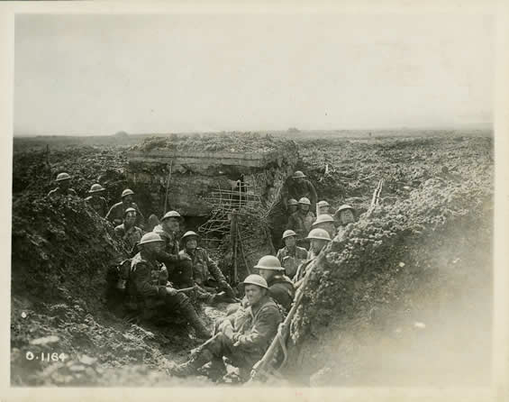
Victory at Last!
At 5:30 am on April 9th, 1917, the four Canadian divisions began their attack. 15,000 Canadians stormed the German lines. “There were countless acts of sacrifice, as Canadians single-handedly charged machine-gun nests or forced the surrender of Germans in protective dugouts (Cook).”
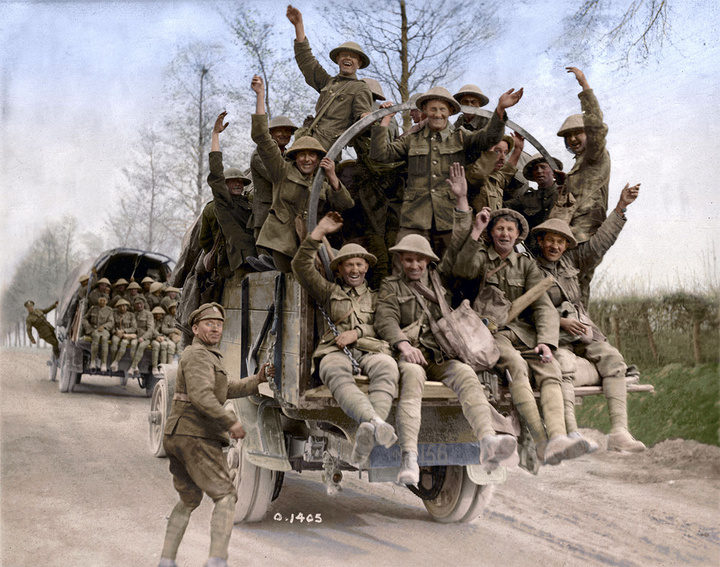
April 7th
1917
Before April 1917, the French had made three attempts to capture the ridge.“Between 1914-1916, the French lost 200,000 men in three attempts to take the ridge” (Finan and Hurley, 1997, as cited by Chapman et al.).” Because of this, it was even more important and difficult for the Canadians. These attacks from the French gave the Germans the opportunity to secure their position on the ridge.
Beginning all the way back in 1916, both the British and Canadians began to rethink their tactics (Humphries). In the weeks leading up to the initial attack, the British and Canadian artillery pounded the German lines. There was new technology that allowed gunners to target and then destroy their enemy. That, coupled with a massive supply of artillery shells as well as the new fuse 106 that caused shells to explode upon contact, and hardened barbed wire defence lines, the Canadians were extremely well supported going into the battle (Cook).
Prior to the battle, a series of intricate and strategically planned tunnels were dug around the area. These were used for a number of different things.
- The tunnels were used to help transport troops and supplies between the front-line trenches and the medic stations (Chapman et al.).
- The tunnels had rooms that were used as sleep quarters as well as storage for weapons and food (Chapman et al.).
The success at Vimy Ridge gave the Canadians a new image. One of bravery and dedication to King and Country. This would be a contributing factor to the later independence of Canada. It is widely considered to be “the birth of a nation.” - Brigadier-General A. E. Ross
Frank Joins the War Effort
There is little known about Frank’s Experience in the war. What is known is mostly based off of personal stories from family members that have been passed on, and pieces of information found within his paperwork.
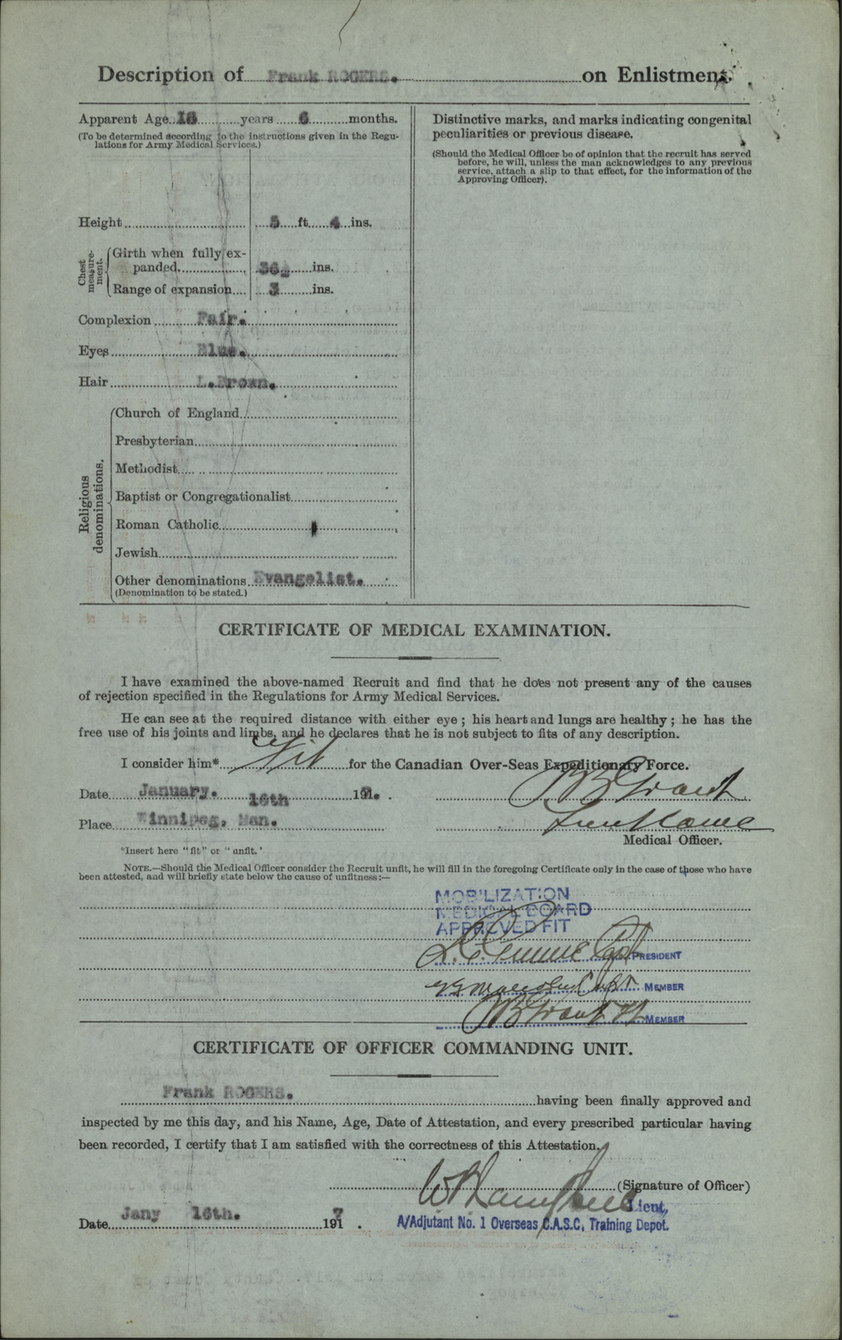
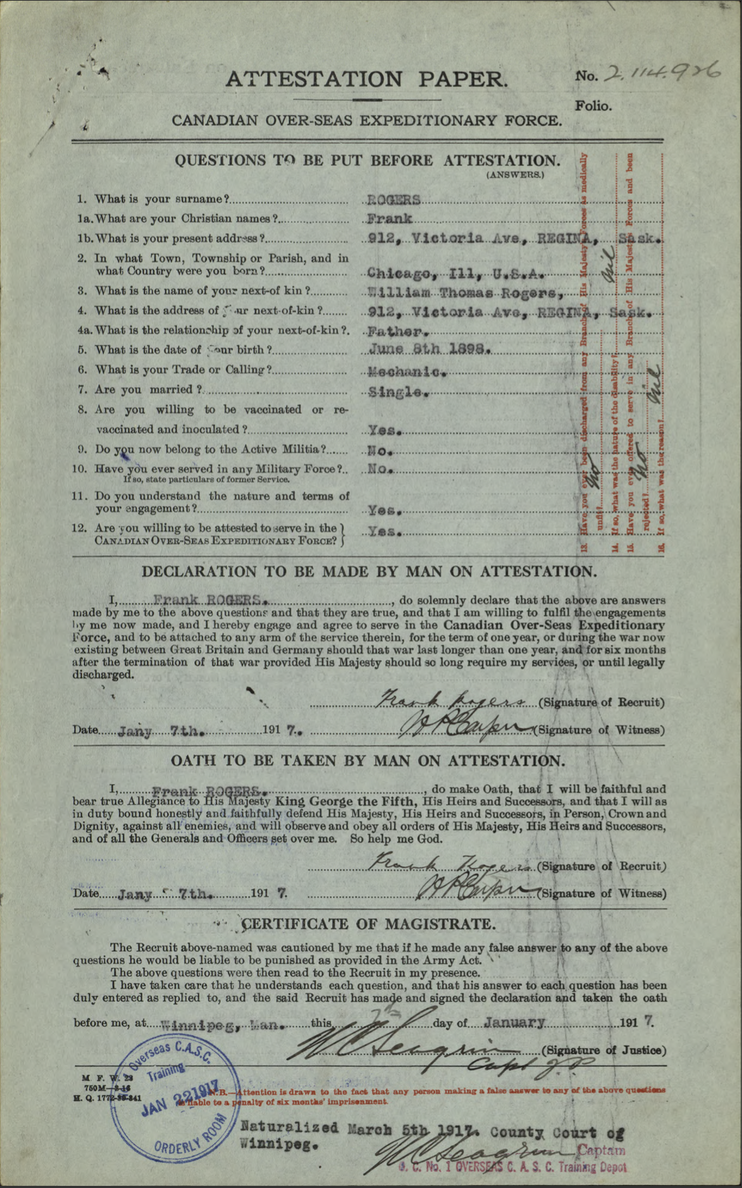
Fortunately, we have access to a large number of Frank’s papers, including his attestation papers, war payments, and medical records. Many of these documents say a lot of the same things, however, they give a good indication of the time period and how things were documented.
Frank’s medical documents, for example, do not help to piece together his experience at the front, yet they do give a glimpse into his life and help bring him to life a little bit. Seeing an image of his teeth humanizes him, and reminds us that he was once a real human being and that he lost his life tragically, for his country.
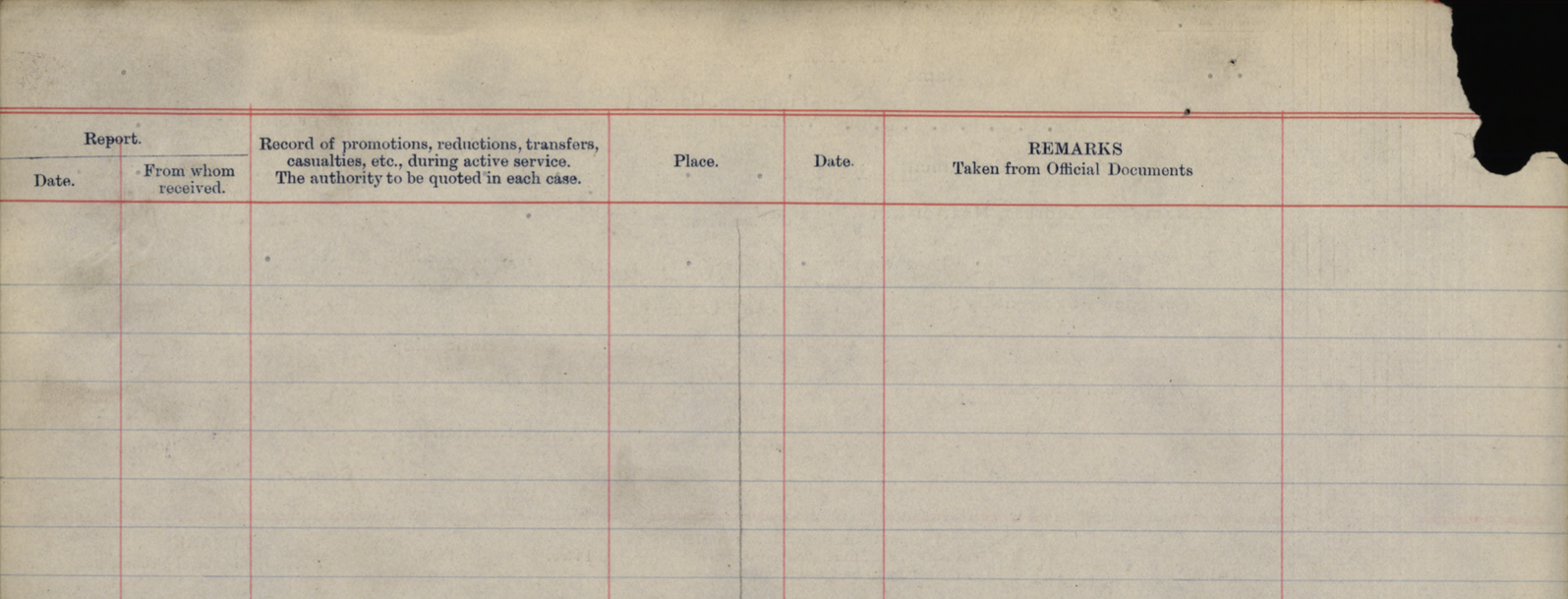
Franks' War Timeline,
April 7th, 1917 - November 6th, 1917
April 7th, 1917
Montreal to Liverpool
The S.S. Metagama was a transatlantic ocean liner that was used in the First World War to transport troops back and forth from Canada to Liverpool (“Liverpool: SS Metagama (Canadian Pacific Line) Travelling from Montreal to Liverpool....”). Frank was on the S.S. Metagama in April of 1917, on his way to begin training in England.
June 16th, 1917
11th Battalion, CEF, France
Frank was placed in the 11th Reserve Battalion (Manitoba) since he initially enlisted in Winnipeg in 1917. He served as an ambulance driver in France.
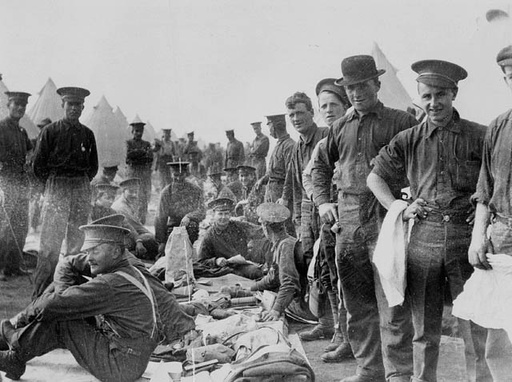
August 10-11th, 1917
Admitted to the No. 4 and No. Canadian Feild Ambulance, France
On August 10th, Frank was wounded in his right shoulder somewhere in France and was then admitted to the No. 4 Canadian Field Ambulance (CFA). On August 11th he was transferred to the No. CFA.
August 19th, 1917
Discharged, France
After tending to his wounded shoulder, Frank was discharged and rejoined his unit, the 27th Battalion as an ambulance driver and headed back to the front.
November 7th, 1917
Killed in Action, France
On November 6th, 1917, Frank Rogers was hit by an explosive while driving an ambulance and was sadly killed in action.
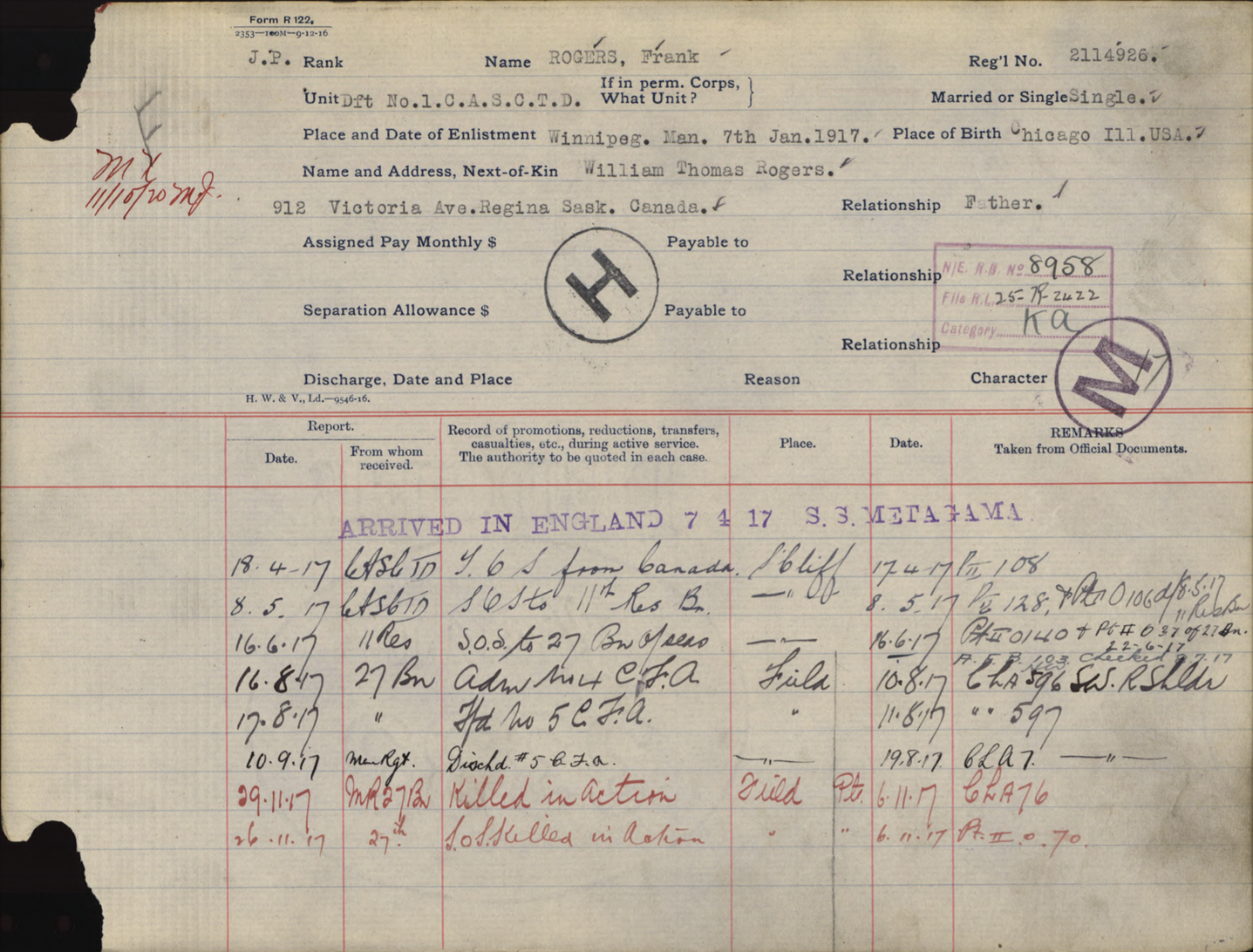
These papers were used to piece together Frank’s story. Though they do not give a lot of detail, we can use them for context and get an understanding of where he was and when. Keeping in mind what was happening with the war, we can infer certain things about Frank’s experience.
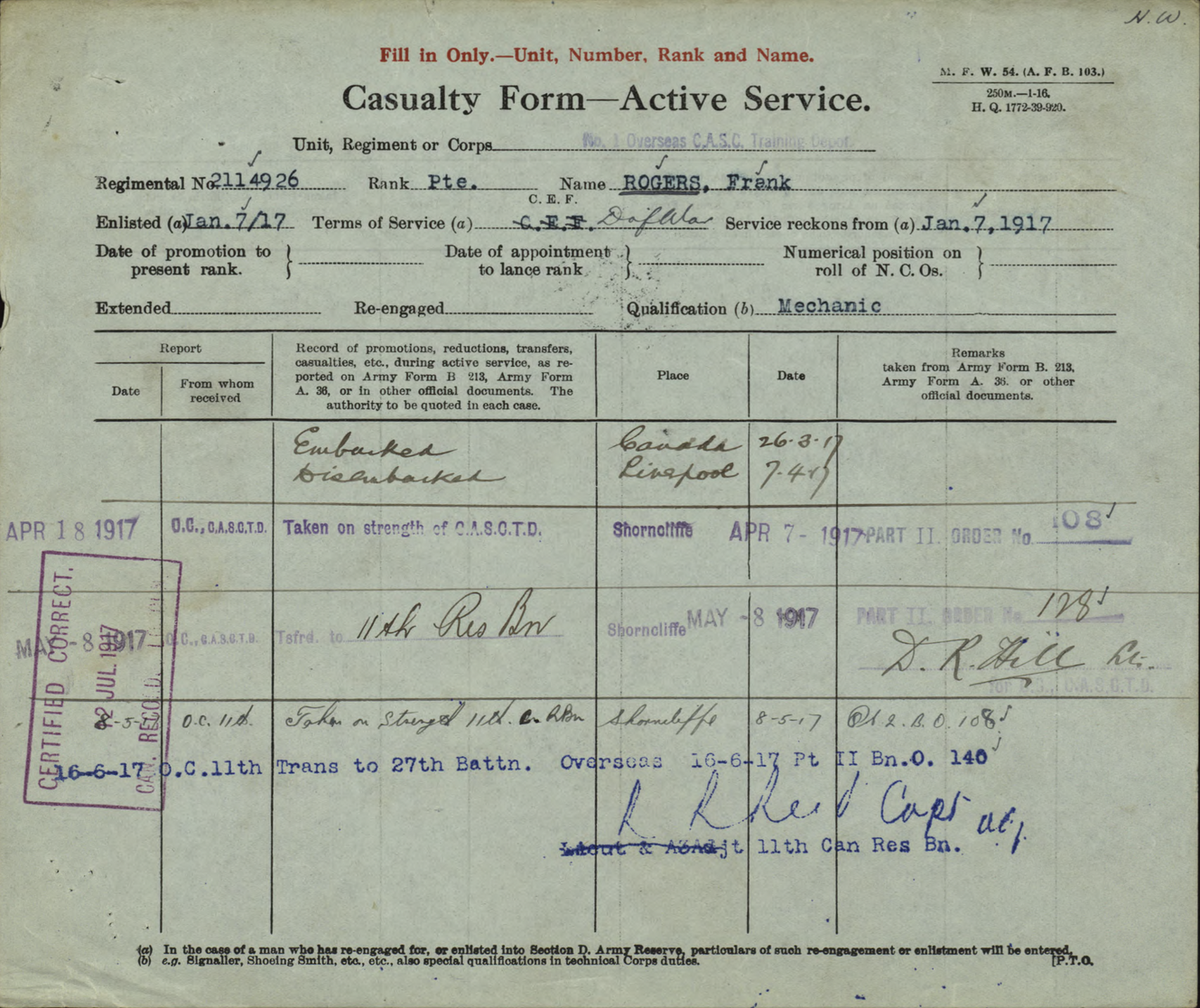
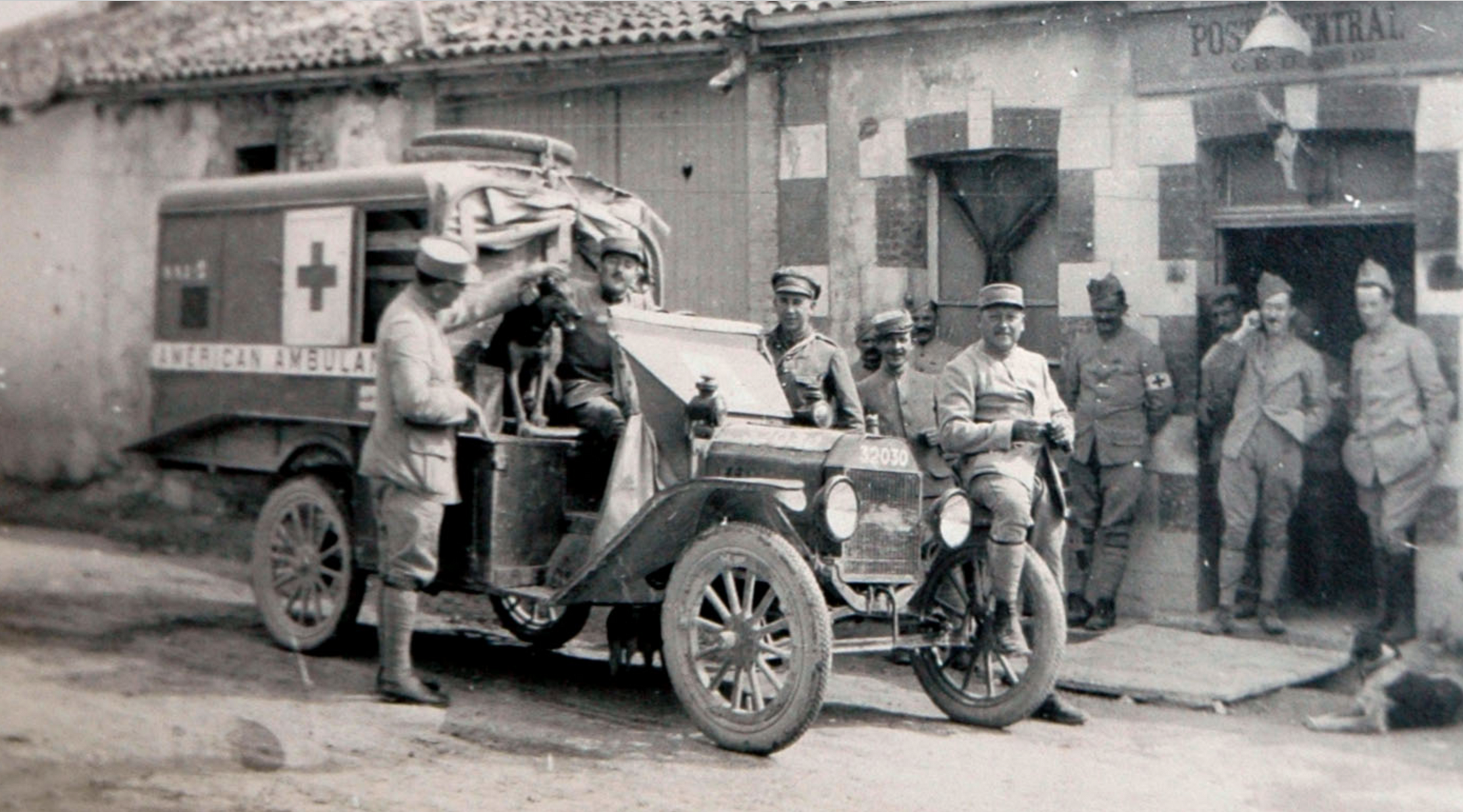
Ambulance Driver
Because of Frank’s knowledge of mechanics and motor vehicles, he made a great ambulance driver. Since motorized vehicles were still relatively new in 1917, it was not as common to find folks who had a strong knowledge, but Frank did, and that may him a valuable part of the war effort.
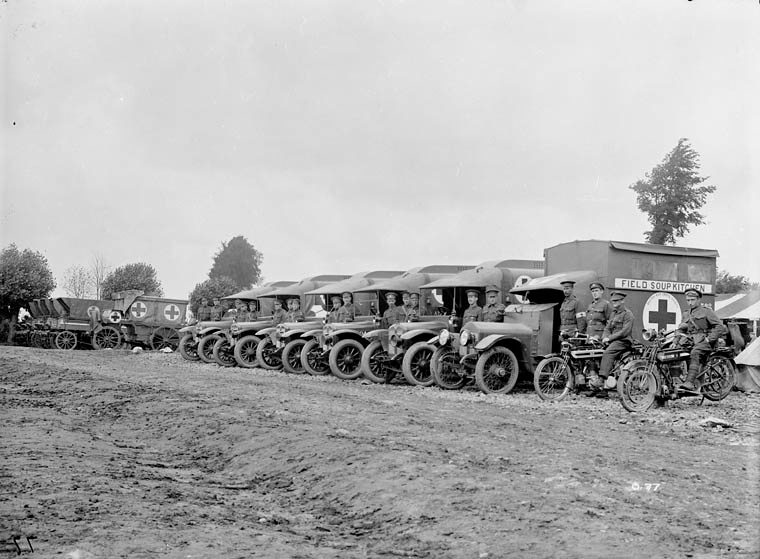
A typical day at No 1 Stationary Hospital.
Source: Trent University Archives
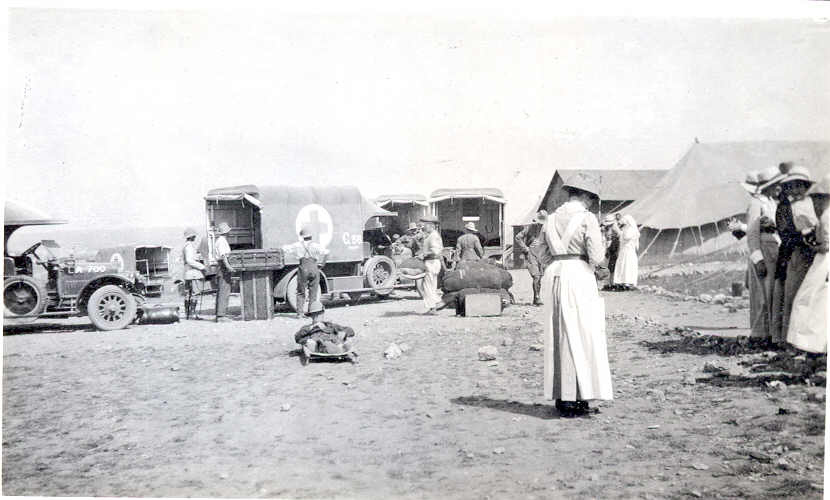
Remembrance
Frank Rogers
June 8th, 1898 - November 6th, 1917
The smaller image shows the original grave marker of Frank Rogers from 1917. This would have been his temporary marker, most likely located near where he was killed. The Larger image shows the final resting place of Frank, at Tyne-Cot Cemetery in Belgium. The photo was taken in 1954.
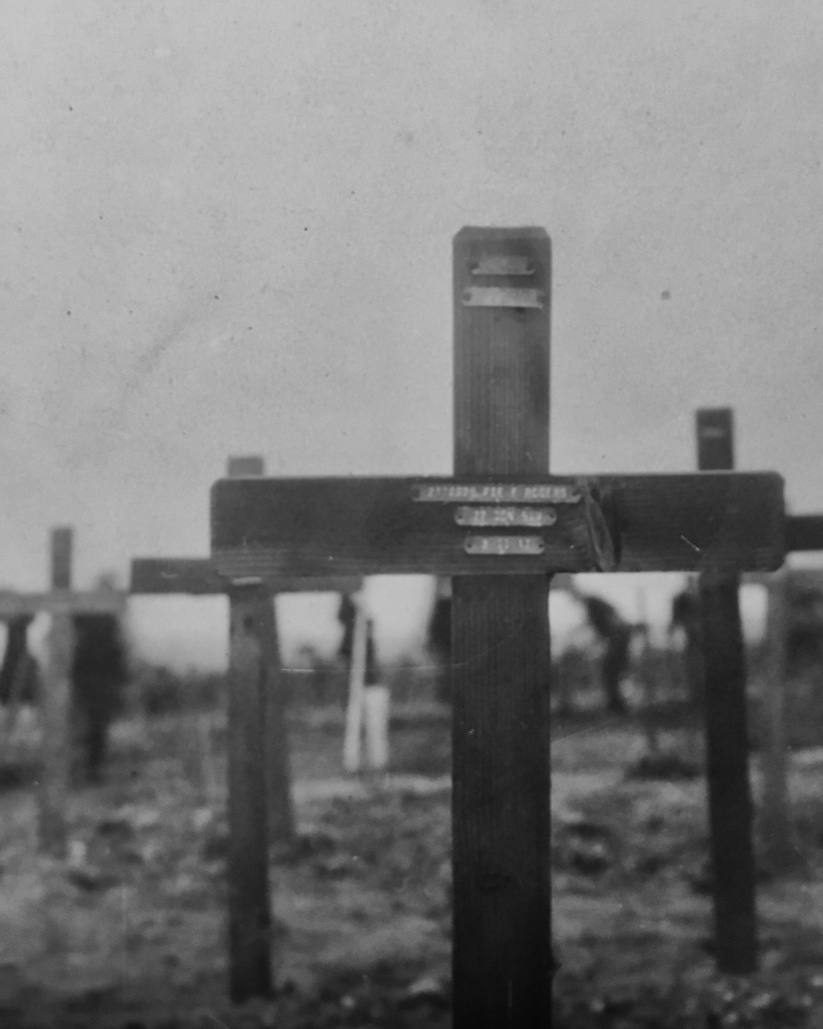
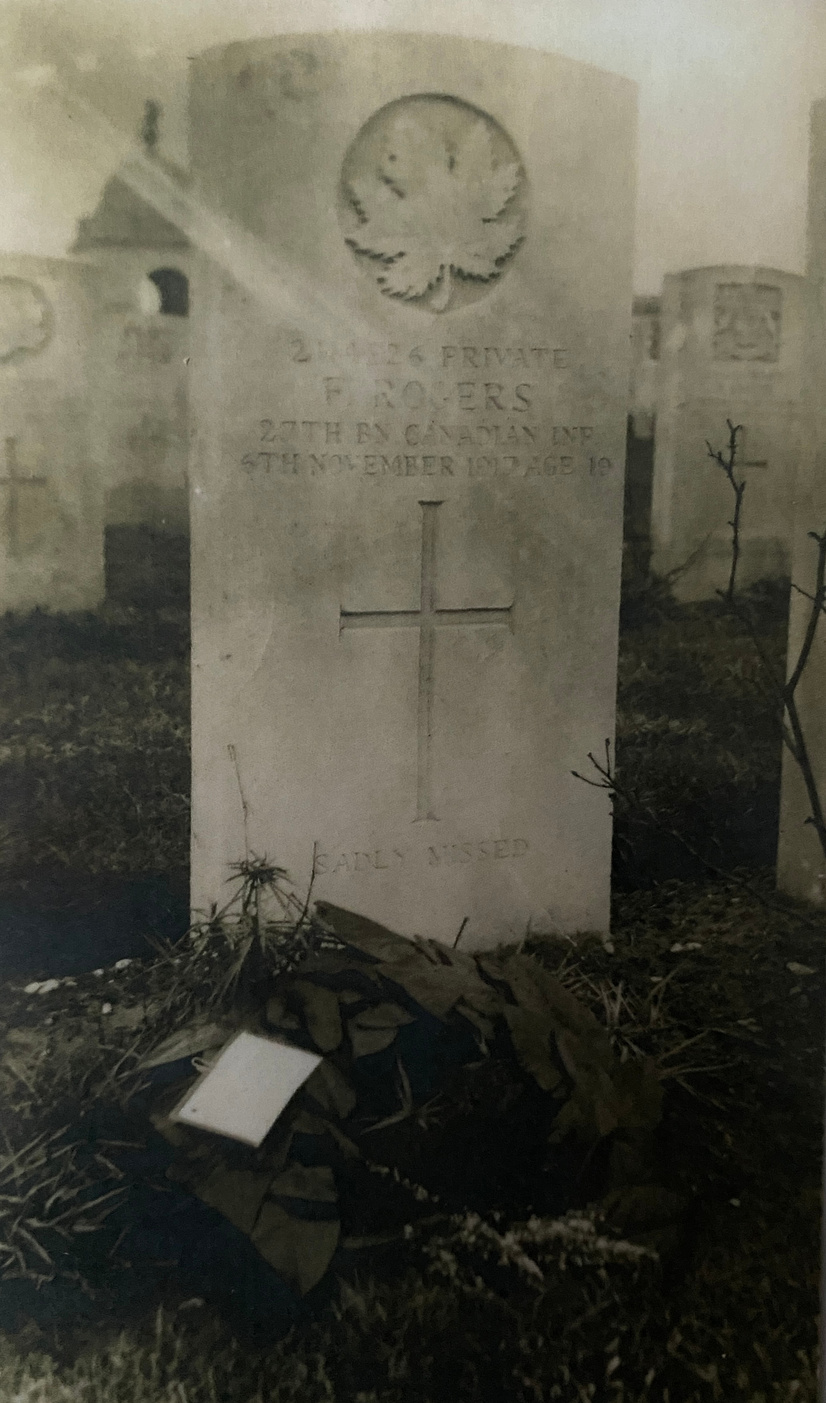
The Author's Connection
“Today, at the Tyne Cot Cemetery, I had the honour to be able to share the story of my Great Granduncle, Frank Rogers at his grave marker. The feelings I had were indescribable, I will do my best to explain some of the emotions I felt. Prior to presenting Frank's biography, I had told myself that I would not cry. However, as I was reading the story of his life, I could not stop myself. Something seemed to overtake me. A feeling almost as if I were talking to Frank himself. but there was a sort of barrier or wall between us. A barrier that allowed me to see him and his life, but he was unable to see me and my life. I wonder if he heard the promise that I made to him to never let his story be forgotten, and that I will never let him be forgotten. I hope that I have made him proud, and I am so incredibly grateful to have had the opportunity to be able to pass on his story in the country where his story ended. It was like he was lost and forgotten, but as I embarked on the Beaverbrook Vimy Prize program, I was able to find him and bring him back to life.”
-Maya Burgess
The Beaverbrook Vimy Prize, 2019
The author of this website, Maya Burgess, was one of the 16 youths selected for the Beaverbrook Vimy prize in 2019. It is because of this program that she found out the information about her great grand uncle, Frank Rogers. The program required her to do a small family history research project and provided her with the opportunity to share Frank’s story and visit his gravesite in Belgium. It was an incredible and emotional experience that will never be forgotten. And neither will the story for Frank Rogers. Lest we forget.
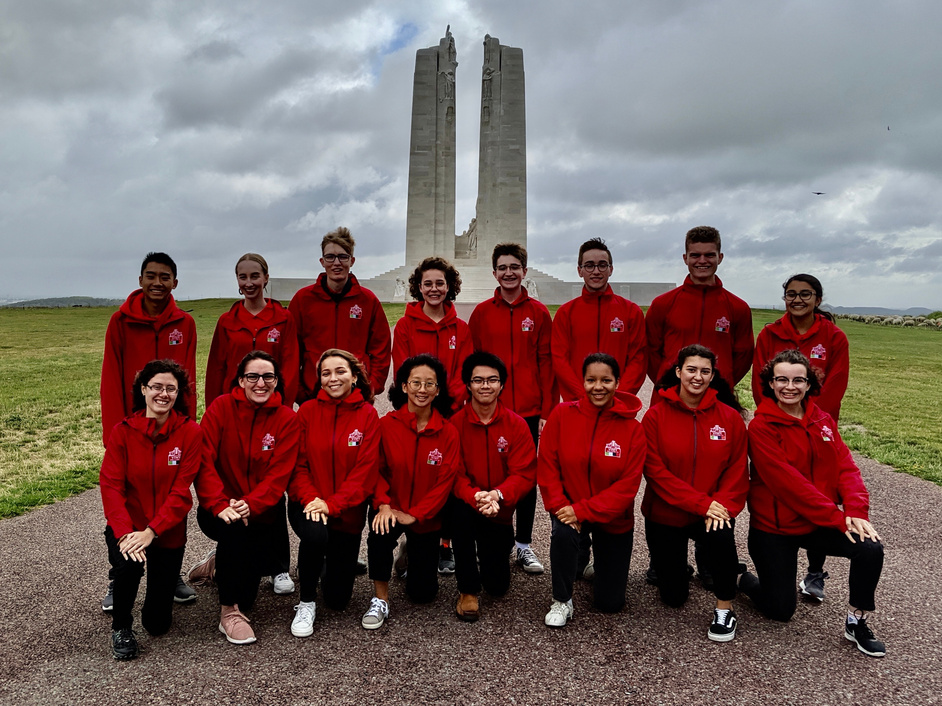
Lest We Forget, Rest in Peace

1917

1954
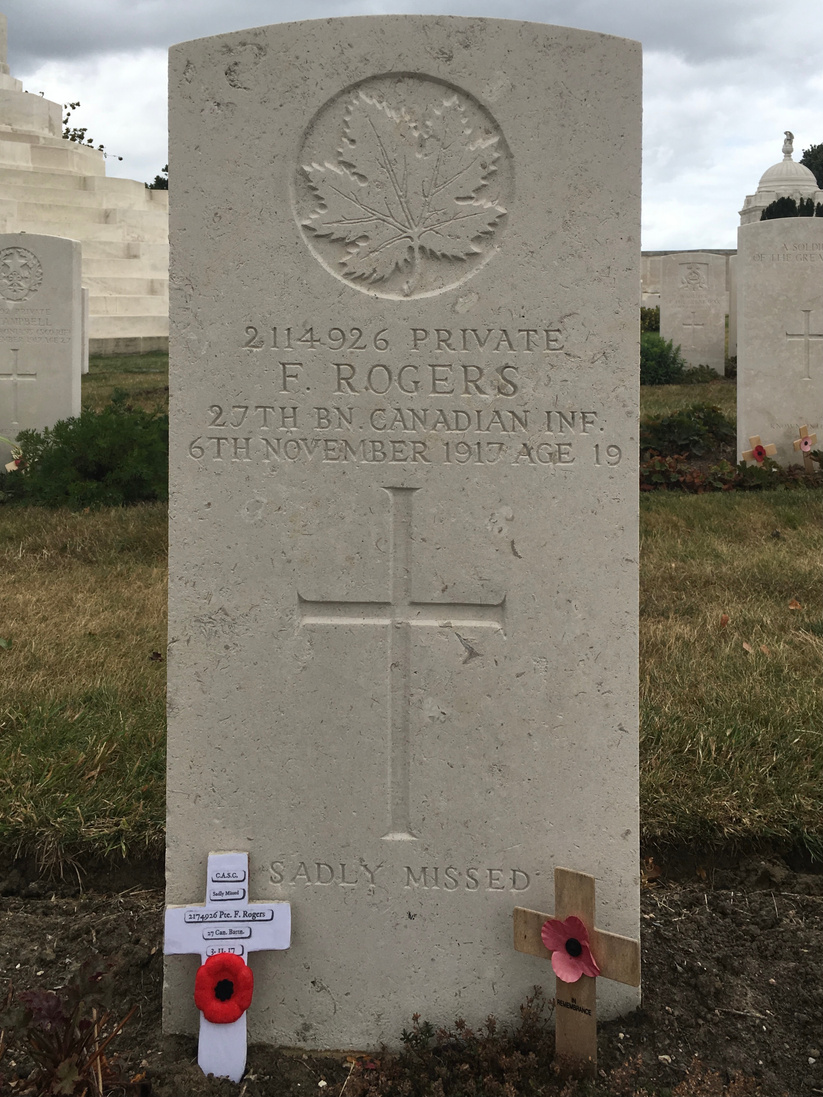
2019
Thank You!
Works Cited (Secondary Sources)
“1912 ‘Regina Cyclone.’” CBC, 2019, www.cbc.ca/player/play/1616363621.
ARMSTRONG, HAMILTON FISH. “Confessions of the Assassin Whose Deed Led to the World War.” Current History (1916-1940), vol. 26, no. 5, 1927, pp. 699–707. JSTOR, http://www.jstor.org/stable/45332464. Accessed 9 Dec. 2022.
“Beaumont Hamel: July 1, 1916.” Heritage.nf.ca, 2015, www.heritage.nf.ca/first-world-war/articles/beaumont-hamel-en.php.
Beckett, Ian F. W. “Franz Ferdinand.” The Historian, 2013, pp. 18–22.
Butcher, Tim. “The Man Who Started WWI: 7 Things You Didn’t Know.” CNN, 27 June 2014, www.cnn.com/2014/06/27/opinion/7-things-gavrilo-princip-man-who-started-wwi/index.html.
Canada, Veterans Affairs. “Battle of Beaumont-Hamel - Veterans Affairs Canada.” Www.veterans.gc.ca, 12 July 2022, www.veterans.gc.ca/eng/remembrance/wars-and-conflicts/first-world-war/battle-of-beaumont-hamel.
Chapman, Timothy C., et al. “Canadian Victory on Vimy Ridge: The Creation of the Creeping Barrage and the Defining Moment of a Nation.” The Pacific Journal of Science and Technology, vol. 22, no. 2, Nov. 2021.
Cook, Tim. “The Battle of Vimy Ridge | Canadian War Museum.” Warmuseum.ca, Canadian War Museum, 2015, www.warmuseum.ca/the-battle-of-vimy-ridge/.
Feuerherd, Peter. “Does Political Violence Generate Real Change?” JSTOR Daily, 28 June 2017, daily.jstor.org/does-political-violence-generate-real-change/.
Flavelle, Ryan. Canadian Military History Canadian Military History the Second Battle of Ypres and 100 Years of Remembrance the Second Battle of Ypres and 100 Years of Remembrance. 2015.
Foot, Richard. “Canada and the Second Battle of Ypres | the Canadian Encyclopedia.” Www.thecanadianencyclopedia.ca, 27 July 2006, www.thecanadianencyclopedia.ca/en/article/battle-of-ypres#:~:text=The%20Second%20Battle%20of%20Ypres%20was%20fought%20during%20the%20First.
“Franz Ferdinand.” Net.lib.byu.edu, net.lib.byu.edu/estu/wwi/bio/f/franzfrd.html.
Harding, Robert. “Glorious Tragedy: Newfoundland’s Cultural Memory of the Attack at Beaumont Hamel, 1916-1925.” Newfoundland Studies, vol. 21, no. 1, 2006, pp. 3–40, www.erudit.org/en/journals/nflds/2006-v21-n1-nflds_21_1/nflds21_1art01/.
History.com Editors. “Archduke Ferdinand Assassinated.” HISTORY, A&E Television Networks, 10 Sept. 2018, www.history.com/this-day-in-history/archduke-ferdinand-assassinated.
Humphries, Marck Osborne. Vimy Ridge: A Canadian Reassessment. 2007. Geoffrey Hayes Paperback, pp. 65–82.
Janes, Chelsae. “‘The Loyal and Most Ancient Colony’ at Its Most Loyal: Newfoundland and the Battle of Beaumont-Hamel.” Yale Historical Review. AN Undergraduate Publication, Spring 2012, 2010, pp. 25–39.
“Land Battles - Second Ypres | Canada and the First World War.” Canada and the First World War, Canadian War Museum, 2019, www.warmuseum.ca/firstworldwar/history/battles-and-fighting/land-battles/second-ypres/.
“Liverpool: SS Metagama (Canadian Pacific Line) Travelling from Montreal to Liverpool....” The National Archives (UK), 5 June 1916, discovery.nationalarchives.gov.uk/details/r/C9362698.
Macmillan, Margaret. “The Archduke’s Assassination Came close to Being Just Another Killing.” The Globe and Mail, 27 June 2014, www.theglobeandmail.com/news/world/how-the-archdukes-assassination-came-close-to-being-just-another-killing/article19379097/.
Matthews, Tom. “Franz Ferdinand Assassination: A Catalyst for WWI.” Historic Newspapers, 21 Oct. 2018, www.historic-newspapers.co.uk/blog/the-franz-ferdinand-assassination-a-catalyst-for-world-war-one/.
Mindich, Talia. “8 Things You Didn’t Know about Franz Ferdinand.” PBS NewsHour, 27 June 2014, www.pbs.org/newshour/world/8-things-didnt-know-franz-ferdinand.
Noakes, Taylor C. “Regina Cyclone | the Canadian Encyclopedia.” Www.thecanadianencyclopedia.ca, 25 Aug. 2022, www.thecanadianencyclopedia.ca/en/article/regina-cyclone.
Palek, Stephanie. “Sarajevo 1914.” Www.lib.cam.ac.uk, 23 Apr. 2015, www.lib.cam.ac.uk/collections/departments/germanic-collections/about-collections/spotlight-archive/sarajevo-1914.
Simple History. “Creeping Barrage (Military Tactic).” YouTube, 14 Nov. 2019, www.youtube.com/watch?v=978LQpgsAPI.
Stewardson, John E. “Regina’s Day of Wrath: The Killer Cyclone of 1912 - Canada’s History.” Canadashistory.ca, 10 Apr. 2016, www.canadashistory.ca/explore/environment/regina-s-day-of-wrath-the-killer-cyclone-of-1912.
“The Regina Cyclone of 1912 | Provincial Archives of Saskatchewan.” Saskarchives.com, 2011, www.saskarchives.com/collections/exhibits/regina-cyclone-1912.
“What You Need to Know about the Second Battle of Ypres.” Imperial War Museums, www.iwm.org.uk/history/what-you-need-to-know-about-the-second-battle-of-ypres.
Works Cited (Primary Sources)
“11th Battalion.” Wikipedia, 8 Jan. 2012, en.wikipedia.org/wiki/11th_Battalion.
“Beaumont Hamel: July 1, 1916.” Heritage.nf.ca, 2015, www.heritage.nf.ca/first-world-war/articles/beaumont-hamel-en.php.
Campbell, Brooke. “War of Words - Canada’s History.” Canadashistory.ca, 2020, www.canadashistory.ca/explore/military-war/war-of-words.
Feuerherd, Peter. “Does Political Violence Generate Real Change?” JSTOR Daily, 28 June 2017, daily.jstor.org/does-political-violence-generate-real-change/.
“File:Franz Ferdinand.jpg - Wikimedia Commons.” Wikimedia.org, 2018, commons.wikimedia.org/wiki/File:Franz_ferdinand.jpg.
Foot, Richard. “Battle of Vimy Ridge | the Canadian Encyclopedia.” Www.thecanadianencyclopedia.ca, 20 July 2006, www.thecanadianencyclopedia.ca/en/article/vimy-ridge#.
---. “Canada and the Second Battle of Ypres | the Canadian Encyclopedia.” Www.thecanadianencyclopedia.ca, 27 July 2006, www.thecanadianencyclopedia.ca/en/article/battle-of-ypres#:~:text=The%20Second%20Battle%20of%20Ypres%20was%20fought%20during%20the%20First.
Imperial War Museums. “Voices of the First World War: Gas Attack at Ypres.” Imperial War Museums, 2018, www.iwm.org.uk/history/voices-of-the-first-world-war-gas-attack-at-ypres.
Johnson, Ben. “World War One Timeline of Events in 1915.” Historic UK, www.historic-uk.com/HistoryUK/HistoryofBritain/World-War-1-Timeline-1915/.
Litehouseman. “Beaumont-Hamel Caribou.” Flickr, 30 June 2006, www.flickr.com/photos/litehouseman/441298721.
“Model T Ford Forum: My First Model T - World War 1 Ambulance Project.” Www.mtfca.com, www.mtfca.com/discus/messages/599638/696020.html?1480122556. Accessed 9 Dec. 2022.
“Official Art - the Second Battle of Ypres, 22 April to 25 May 1915.” Canada and the First World War, www.warmuseum.ca/firstworldwar/objects-and-photos/art-and-culture/official-art/the-second-battle-of-ypres-22-april-to-25-may-1915/?back=132.
Pietzner, Carl. “Archduke Franz Ferdinand of Austria.” Wikimedia Commons, 19 Dec. 1919, commons.wikimedia.org/wiki/File:Franz_ferdinand.jpg.
“Private Papers of Lieutenant E W Cotton.” Imperial War Museums, www.iwm.org.uk/collections/item/object/1030001540.
“Regina: The Early Years 1880 -1950.” Digital.scaa.sk.ca, 1912, digital.scaa.sk.ca/gallery/regina/central/city_hall_cora_b_166.html.
“Second Battle of Ypres in World War I.” HISTORY CRUNCH - History Articles, Biographies, Infographics, Resources and More, www.historycrunch.com/second-battle-of-ypres-in-world-war-i.html#/.
“The Archduke’s Assassination Came close to Being Just Another Killing.” The Globe and Mail, www.theglobeandmail.com/news/world/how-the-archdukes-assassination-came-close-to-being-just-another-killing/article19379097/.
“THE BATTLE of VIMY RIDGE: Part 1: Preparing the Attack.” Espritdecorps, espritdecorps.ca/history-feature/the-battle-of-vimy-ridge-part-1-preparing-the-attack.
The British Library. “World War One.” The British Library, 2019, https://doi.org/https://www.bl.uk/world-war-one.
“The Star’s Report on the Assassination of Archduke Ferdinand.” The Toronto Star, 28 June 2014, www.thestar.com/news/gta/2014/06/28/the_stars_report_on_the_assassination_of_archduke_ferdinand.html.
The Vimy Foundation. “History of Vimy Ridge | Learn | the Vimy Foundation.” Vimyfoundation.ca, 2022, vimyfoundation.ca/learn/vimy-ridge.
unknown, Author. “English: The Bloodstained Uniform of Archduke Franz Ferdinand of Austria, Being Displayed Sometime after His Assassination.” Wikimedia Commons, 19 June 2014, commons.wikimedia.org/wiki/File:FranzFerdinand_uniform.jpg.
“World War One | Royal Canadian Medical Service.” Www.royalcdnmedicalsvc.ca, www.royalcdnmedicalsvc.ca/about-us/virtual-museum-3/world-war-one/. Accessed 8 Dec. 2022.